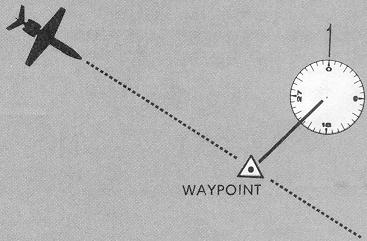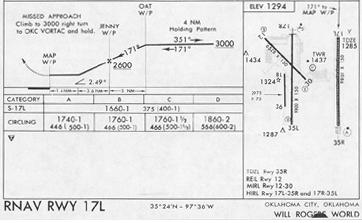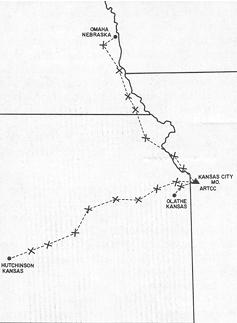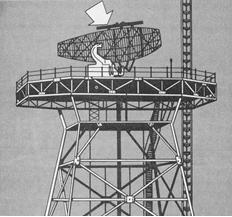
The FAA first began installing radar equipment at airports in the late 1940s. Further development of radar systems and their expanded use in the Air Traffic Control system have greatly modified and simplified instrument flying procedures. There are three basic types of radar systems: ASR (airport surveillance PAR (precision approach radar), and ASDE (airport surface detection equipment).
Fundamental Principles of Radar. Radar is based upon the precise
timing of a returning RF echo from a target and the displaying of this
information to the radar operator in such a manner that the distance and
bearing to this target can be instantly determined. The radar transmitter
must be capable of delivering extremely high power levels toward the airspace
under surveillance, and the associated radar receiver must be able to detect
extremely small signal levels of the returning echoes.
These requirements can be better appreciated when you realize
that the effective size of a small airplane is comparable to a small doorway.
The radar system may be expected to detect and display the plane from what
small fraction of energy is reflected from this surface at ranges up to
200 miles under optimum conditions. By means of a Microwave Link Relay
System (Fig. 7-23), an unlimited number of radar transmitter sites can
be remoted from the control center to provide navigational guidance along
the air routes.
Primary Radar. The surveillance system provides the controller with a map-like presentation upon which appears all the radar echoes of aircraft within detection range of the radar facility. By means of electronically generated range marks and azimuth-indicating devices, the controller can locate each radar target with respect to the radar facility, or can locate one radar target with respect to another. From direct-reading counters on his control panel, the controller determines the bearing and range of one aircraft target with respect to another.
Figure 7-20. Aircraft/VORTAC/waypoint relationship.
 |
Figure 7-21. RNAV approach procedure chart.
 |
|
 |
Figure 7-22. RNAV guidance instrument.
 |
Another device, a video mapping unit, generates an actual airway or airport map and presents it on the radar display equipment. Using the video mapping feature, the air traffic controller not only can view the aircraft targets, but will see these targets in relation to runways, navigation aids, and hazardous ground obstructions in the area.
Figure 7-23. Microwave link relay system.
 |
The essential difference between Airport Surveillance Radar and Air Route Surveillance Radar is in the equipment required to provide greater maximum usable ranges. Airport surface detection equipment (ASDE) is also a surveillance system, but it scans the ground, rather than the air, for targets. At many major terminals, runways or taxiways may be as far as 2 miles from the controller's position. During all weather conditions, the ASDF equipment permits the controller to have radar-visual access to all parts of the airport although he may not be able (optically) to see the far ends of the airport (Fig. 7-24).
Use of the FAA primary radar facilities will be fully discussed in Chapter XI, "Air Traffic Control."
Secondary Radar. The surveillance radar system cannot identify one specific radar target found within a display presenting perhaps a dozen or more targets. This problem can be solved with Air Traffic Control Radar Beacon System (ATCRBS) equipment, which is becoming more prevalent in business aircraft installations. The ground equipment is an interrogating unit, with the beacon antenna mounted so as to scan with the surveillance antenna. The interrogating equipment transmits a coded pulse sequence that actuates the aircraft transponder. The transponder answers the coded sequence by transmitting a preselected coded sequence back to the around equipment, providing positive aircraft identification as well as other special data. Figure 7-25 shows the ASR antenna with the associated interrogating unit on top.
Figure 7-24. ASDE radar.
 |
Figure 7-25. ASR and beacon antenna.
 |